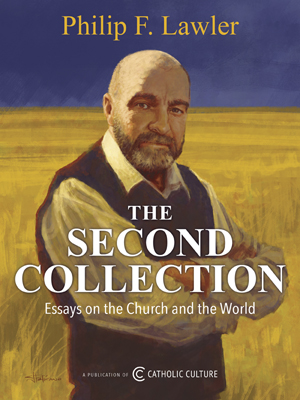Make your gift today!
Help keep Catholics around the world educated and informed.
Already donated? Log in to stop seeing these donation pop-ups.
Catholic Activity: Teaching About Criticism
St. Simeon Stylites helps children accept the differences in men as well as their sameness. A good lesson to help children and adults not misjudge each other.
DIRECTIONS
Children and adults easily misjudge one another. A child who is quiet and introspective may seem to the noisy, outgoing ones to be a snob. Another who has unusual hobbies might be thought deliberately aloof. One who is strong and healthy may suspect there is a lack of manliness in those who are not. Certain saints help us to see that God does give "different" vocations and we must be respectful of them, never scornful. St. Simeon Stylites certainly gave God a strange form of service, yet he is no less a saint. Although we are not to imitate him in his ways we are supposed to be like him in love.
Simeon was the son of a Syrian shepherd and kept his father's flocks. When he was thirteen, in about the year 402, he was deeply moved by a sermon on the Beatitudes and he asked a holy man their meaning. The old man told him that they taught that prayer, watching, fasting, weeping, humiliation and the patient suffering of persecution were the roads to true happiness and he explained that a life of solitude enabled a man best to practice these virtues. Simeon then begged God to lead him on the way of perfection and, seeing in a dream what his future life would be, he went to a monastery to live. After two years of austerity and holiness he went to another monastery. Here he practiced such terrible mortifications, among them the wearing of a rope of twisted palm fibres which embedded itself in his flesh and had to be cut free, that the abbot dismissed him as a warning to the others lest they try like singularities. Then Simeon took himself to a hermitage at the foot of a mountain and fasted the forty days of Lent in memory of the forty days' fast of Our Lord. At the end of this time, he was found senseless on the ground. Reviving, he took a bit of water and received Holy Communion. Thereafter he observed every Lent in this way, standing during the first weeks, sitting during the following, and finally, too weak to sit, he lay down for the final weeks. Thus he lived for three years, after which he moved to the top of the mountain, built himself an enclosure without roof or shelter, and chained himself to it. However, when he was told that a firm will supported by grace should be enough to keep him there — if there he must be — Simeon had a smith sever the chain.
As his reputation for wisdom and holiness grew, people flocked to see him, bringing their sick for his blessing, their problems for his solving. He cured and helped many but he regretted the loss of his solitude so he built himself a pillar about nine feet high and lived on it in prayer and silence for four years, eating little. On a second pillar about eighteen feet high he lived for three years and on a third pillar about thirty-three feet high he spent the last twenty years of his life. It is because the Greek word for pillar is stylos that St. Simeon is called Stylites.
It was to be expected that this singularity of St. Simeon's would be criticized as extravagance. To try his humility and discover if his performances were rooted in self-will, the bishops and abbots of the vicinity ordered him to come down. Immediately he prepared to descend. Seeing his obedience, they sent word that they were convinced his strange way of life was his vocation from God and they permitted him to follow it.
His pillar was never larger than six feet in diameter which made it difficult to lie flat, but Simeon would not allow a seat He stooped, knelt and bowed in prayer. One visitor saw him bow profoundly twelve hundred and forty-four times. He wore animal skins for his clothing.
St. Simeon's way — right for him but certainly not for us — led him to the heroic practice of the virtues described in the Beatitudes, and he grew to such an awareness of God's love and majesty, in such an abhorrence for sin, that he sincerely believed himself to be the worst of men. He preached from his pillar with such sweetness and love that even barbarians and pagans were converted. He died on his pillar at the age of sixty-nine, a "different" saint but one who gave great glory to God.
Activity Source: Saints and Our Children, The by Mary Reed Newland, P.J. Kenedy & Sons, New York; reprinted by TAN Publishers, 1958






